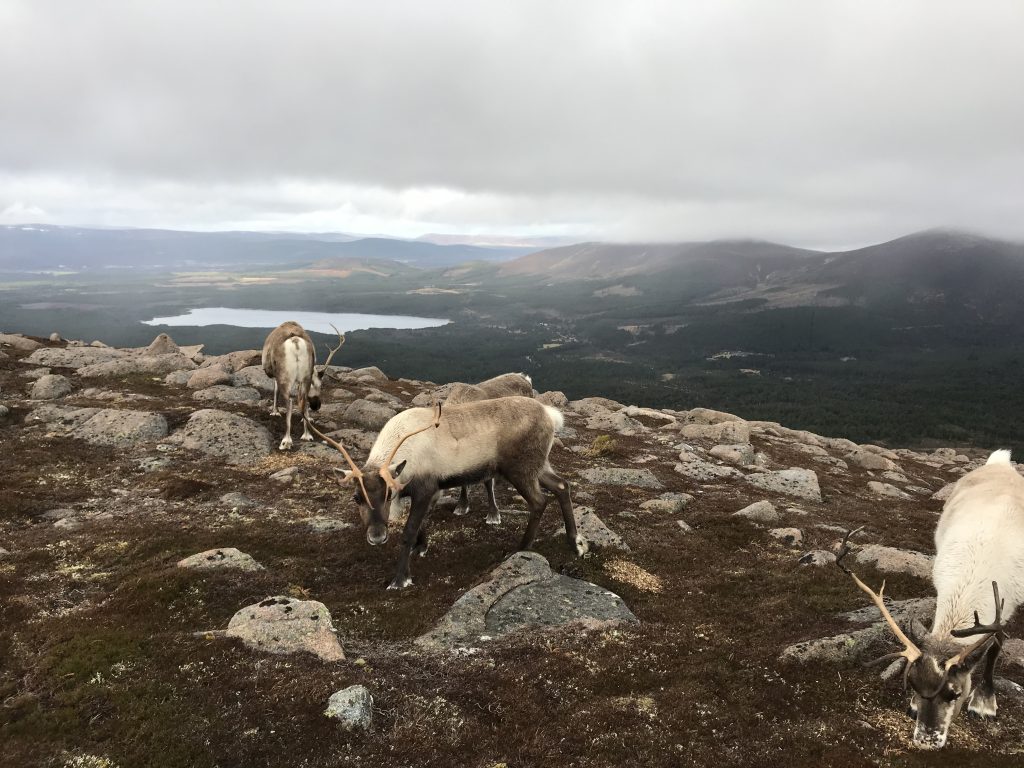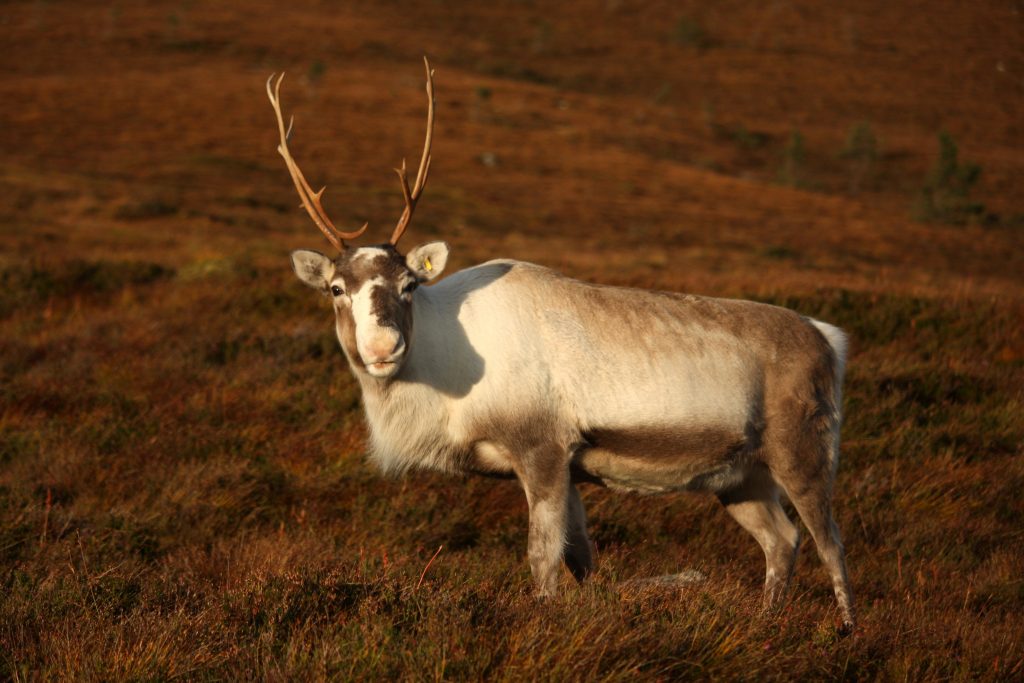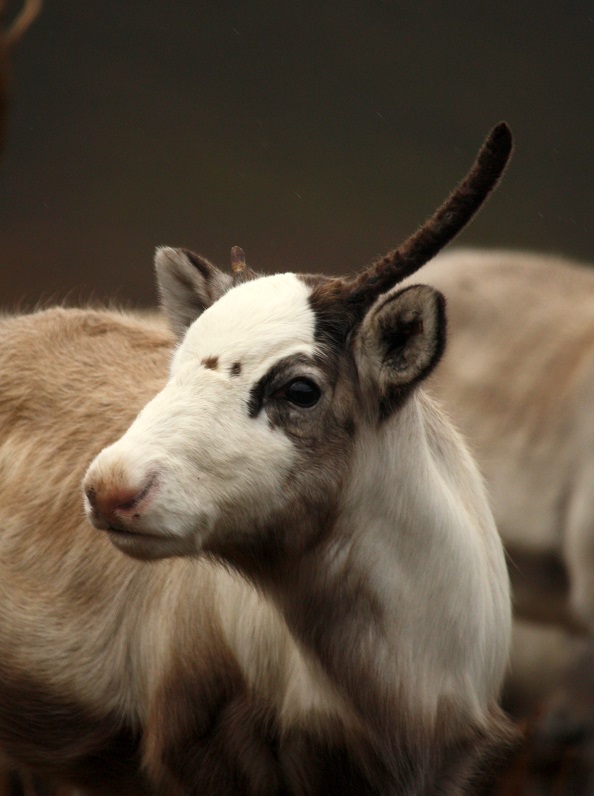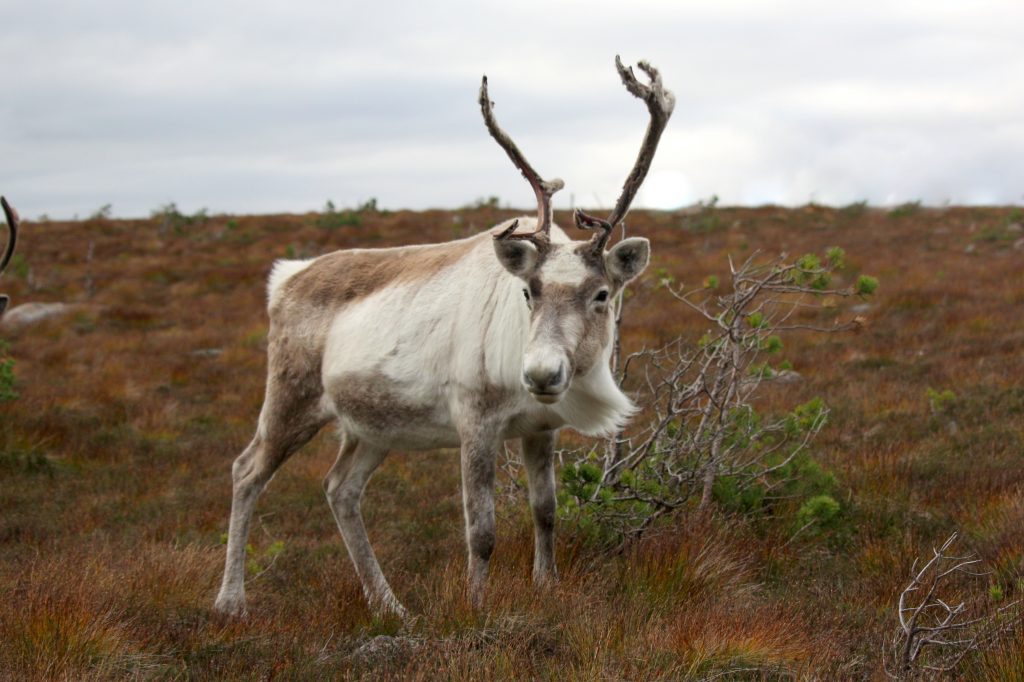After the hustle and bustle of the festivities and Christmas events, the Reindeer Centre is closed for most of January and part of February. For the staff it’s peaceful here at Glenmore, and a great time for keeping busy catching up on all types of jobs related to all aspects of the Centre: Christmas kit, shop, office and outdoor, involving cleaning, maintenance, decorating, and even a new bathroom for those that live in!

But one of the perks of the job is that we do also have to find time periodically to hike up and find, check on and feed the reindeer. This year is the first time in a long time we have had not only the usual females and calves out free ranging in the Cairngorms for the winter months, but also some of our boys with them too.

For myself, after working here almost two years now, I have become confident at learning the names of most of the male reindeer, due to leading frequent hill trips with visitors up to see them all through the Summer months. However, with the females usually free-ranging along with any calves all through the warmer months, this has given me little opportunity for familiarising myself with the girls. The winter hikes this January to check on our free-ranging reindeer have given me a better chance to get to know the females, and with Andi’s tuition and constantly testing me each week, I finally feel like I am making some progress!

The ones with distinctive markings such as Oatcake, Camembert, Parmesan, Christie and Texel, or that are lighter in colour like Lulu and Mozzarella are the easier ones to learn. I am also guilty of learning them by the size and shape of their antlers, which are like a fingerprint and unique to each reindeer, but also fall off once a year, thus leaving you back at square one! Until they regrow again, but a year is a long time to wait.

When I first started and was learning the names for the male reindeer on my first hill trips, I actually discovered that learning the colour and number of the ear tags was the easiest method for me. By law we have to give each of our reindeer an ear tag with a number, similar to if you keep cows or sheep. To make it more exciting (and easier to learn their names), each year our ear tags are a different colour, and we also pick a theme. For example in 2009 they are pink tags and named after cakes, biscuits and puddings. We have Clootie (after the Scottish Clootie dumpling), Jaffa, Hobnob, Pavlova to name a few. And in 2016 they are named after Ancient Civilisations, so we have Pagan, Inca, Chola, Suebi, Celt, and many more.

The longer you are with the reindeer the more attuned you become to the subtle differences between coat colour, variations in face and body shape, and more obviously their individual personalities and traits. I guess if you have ever worked with horses or dogs before, as I have, or any other animals for that matter, then it’s similar. To the untrained eye a species of animals is just that, but the more you get to know them the more obviously they stand out as individuals, and also the more fond of them you become.
Nicky
